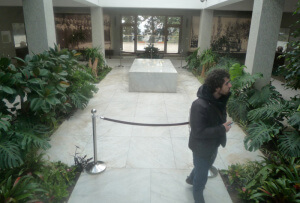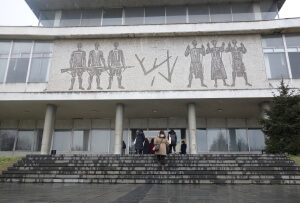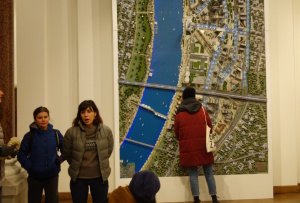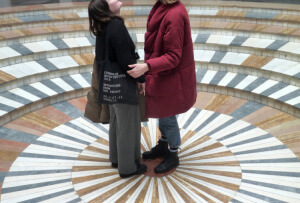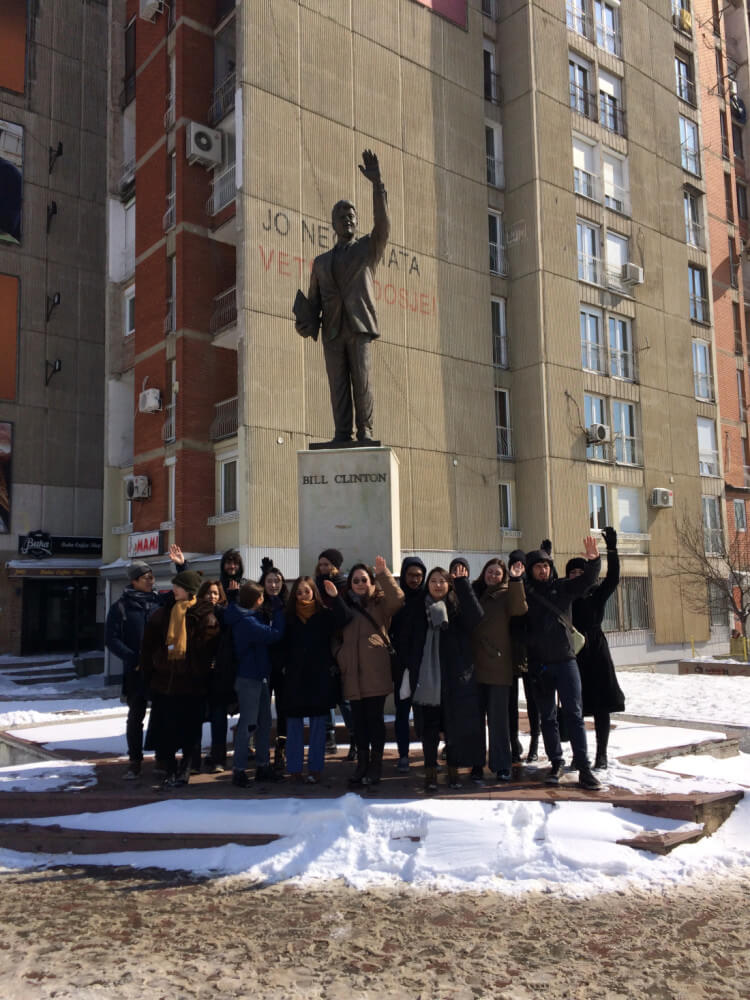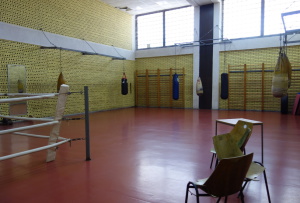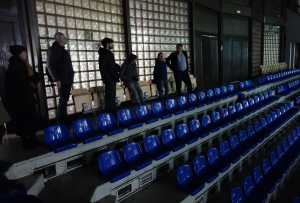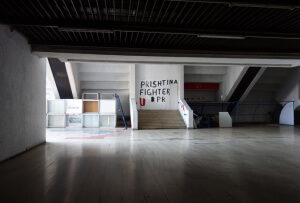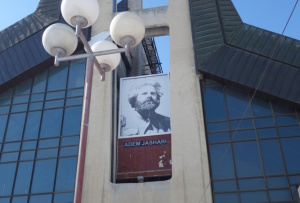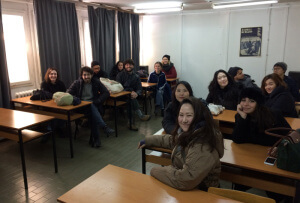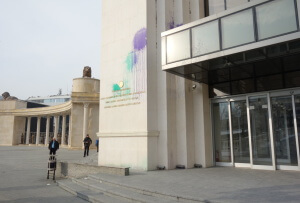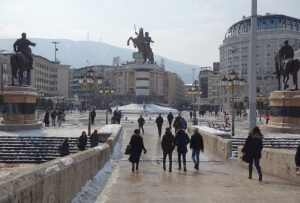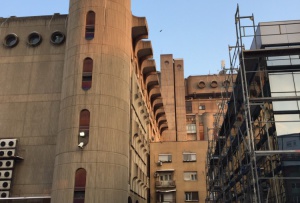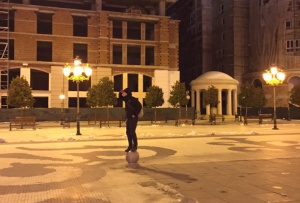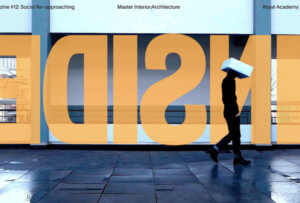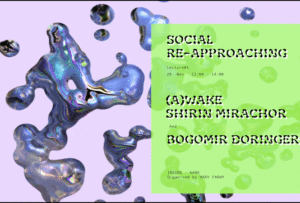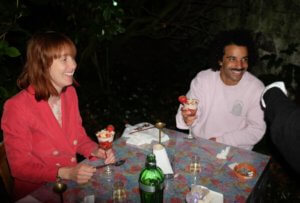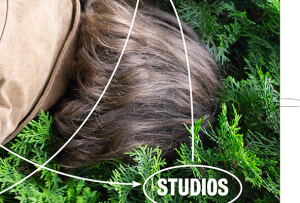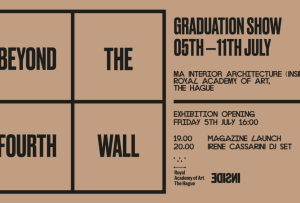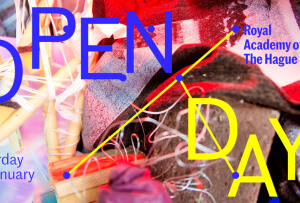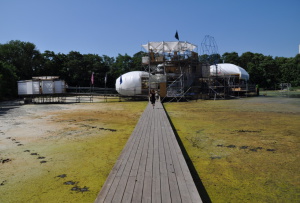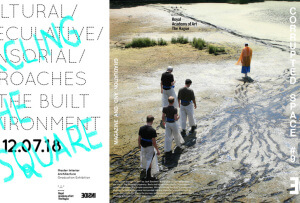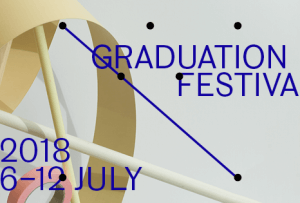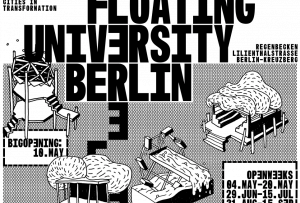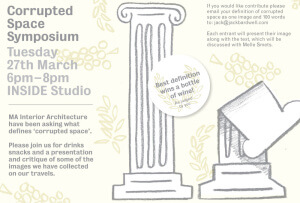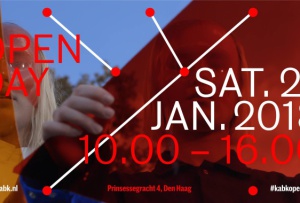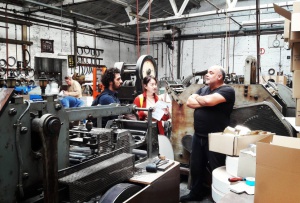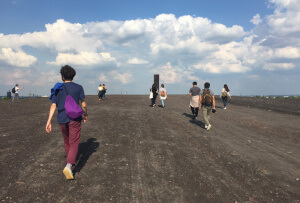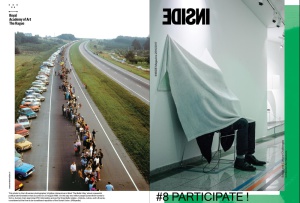BALKANS Travel, 23 February – 2 March 2018
This year our destination of the big INSIDE TRAVEL was the Balkans. We were looking at the highlights of the architecture and the monuments from Yugoslavia, the urban planning, and of course, the INSIDE year theme: corrupted space.
Our journey started in Belgrade. First day, we visited the Museum of Yugoslavia to have a better understanding about the regime of that period and Yugoslav communist revolutionary leader: Josip Broz Tito. His body was also burried in this museum.
In the afternoon, we had a waterfront tour guided by Ana Džokić and Marc Neelen from Stealth, which is the local collective dealing with the spaces, spatiality of production and (social) reproduction. They explained us the Belgrade Waterfront project since 2012 by corrupt politicians and corporation from United Arab Emirates, which is the biggest development project in Serbia’s history. However, the entire project was supposedly planned in secret, with no public participation. In the meantime, an urban movement called Don’t let Belgrade d(r)own was formed in opposition to it.
Next day, we visited Bubanj Memorial Park. This memorial complex was built to commemorate one of the largest mass executions of the Second World War.
After seeing the Three fists monument, we were heading to Kosovo, that is to say, passing one of the most controversial borders in the world.
In Pristina, our first stop was the National Library of Kosovo, which is broadly considered to be one of the ugliest buildings in the world. Its façade was quite strange but rather attractive, giving me an impression of a dystopian movie scene. According to a librarian guiding us, the metal structure of the façade functioned as the protection to minimize the damage that the concrete walls collapsed and ruined the books during the war time. The interior of the building, however, was a big contrast to the outside. We ended up being more captivated by the inside, I suppose. Geometric shapes seemed to dominate, and with many Islamic and Byzantine architectural elements. The atmosphere was serene and tranquil, hard to imagine that it was once so turbulent here. In short, I enjoyed this beautiful ugly building.
Afterwards, we visited the statue of Bill Clinton. After the Kosovo war, the locals made this statue and wanted to thank him for his help in their struggle with the government of Yugoslavia.
Also, we went to the sport and recreation centre from the Yugoslavia period. Accidentally, some of us even got lost in this complex.
Our final stop was Skopje. We had a presentation about Skopje 2014 project given by Neobojsa, the professor from the Faculty of Dramatic Arts. He was very active and involved with all the protests and the movement against this project, since the project was criticized by various groups on its costs, the aesthetics and the waste of resources. He even cancelled his next course just for explaining us the in’s and out’s of the matter and how stupid the project was. Thanks to the passionate professor, we had a better understanding on this ridiculous project and the overview history of Macedonia. I was intrigued by his words about the student movement towards this project since there were similar circumstances happening in my own country (taiwan).
Moreover, we saw some interesting brutalism architecture in the city, visited the museum of contemporary art and the Memorial House of Mother Teresa. To say goodbye to Skopje and the last night of the trip, we had a spontaneous action to act like a statue on one of the liveliest bridge in the city, in honor of this city with more statues than pedestrians.
It was truly a great journey. There were many things to explore and many things happened during the trip; including severe weather conditions, getting lost, being tricked by a taxi driver and unfortunately two of the INSIDERS were rejected at the border checkpoint of Macedonia. As for the turbulent background of the Balkans, I could feel it from the developing cities, and meanwhile, I felt at home regarding the cityscape, the controversial urban renewal and the corrupt politicians. Nevertheless, I see many spatial and social challenges for architects to get involved.
Article written by I-Chieh Liu, INSIDE 1718 student
